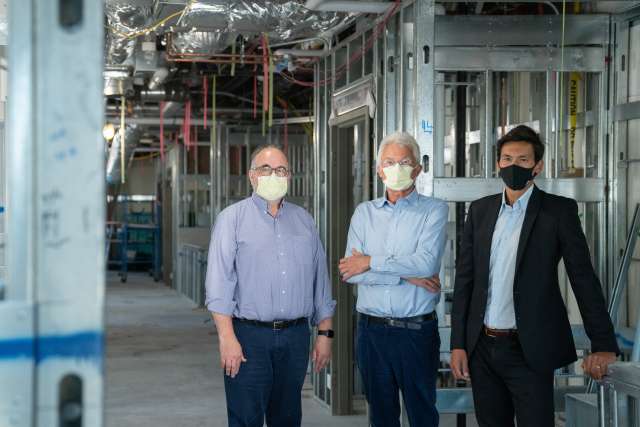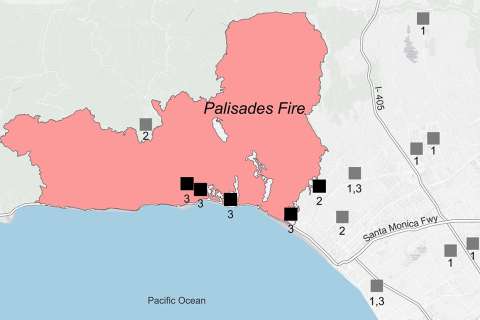UCLA Health’s Ahmanson Translational Theranostics Division, part of the Department of Molecular and Medical Pharmacology at the David Geffen School of Medicine at UCLA, has been designated a Comprehensive Radiopharmaceutical Therapy Center of Excellence by the Society of Nuclear Medicine & Molecular Imaging (SNMMI).
The designation is an acknowledgment that the UCLA program is one of the sites “that are leading the growth in the field” of nuclear medicine in both research and treatment, according to the SNMMI.
Radiopharmaceutical therapy gives doctors another tool, along with surgery, radiation and chemotherapy, to treat some cancers that express a specific target. This molecular target can be detected and visualized using positron emission tomography computed tomography (PET/CT) scans. The combined approach of visualizing the target and delivering a therapy to the cells expressing the target is called “theranostics.”
Radiopharmaceutical therapy made a significant leap forward in March, when the FDA approved the first targeted radioligand therapy for prostate cancer patients who have a protein called prostate-specific membrane antigen (PSMA) found in their tumor cells. PSMA-positive patients who have advanced, metastatic castration-resistant prostate cancer (mCRPC) have few treatment options to extend their lives. A drug called Pluvicto, made by Novartis, combines a targeting compound (ligand) with a therapeutic radioisotope to locate tumors that have spread from the prostate gland to other parts of the body.
“It's a targeted approach using two different radioactive agents that have the same molecular target,” said Jeremie Calais, MD, MSc, an associate professor at the David Geffen School of Medicine, and Director of the Ahmanson Translational Theranostics Division’s (ATTD) clinical research program. “One is to show the target by imaging at the whole-body level, and one is to treat the cells that express the target. It's an individualized approach, because you make sure your patients would potentially benefit from the treatment before it’s administered: You see what you treat, you treat what you see. Theranostics are a great example of precision medicine. ”
The UCLA ATTD Division started this program 10 years ago with theranostics for neuroendocrine tumors (DOTATATE, now Lutathera). Thousands of patients with prostate cancer have been imaged with PSMA PET/CT under research protocols, and an FDA-approved New Drug Application jointly obtained by UCLA and UCSF. More than 125 patients have been treated with Pluvicto therapy since November 2017, and UCLA contributed to the Novartis trial that led to the FDA approval of Pluvicto.
UCLA’s ability to treat more patients will be greatly enhanced by a new outpatient theranostics center being constructed on the seventh floor of the 100 Medical Plaza building on the Westwood campus. It’s scheduled to be completed sometime in 2023. The multimillion-dollar 3,000-square-foot facility will have eight infusion chairs and will be able to deliver an estimated 4,000 treatment cycles/year to patients with prostate cancer, neuroendocrine tumors and thyroid cancer.
The center was funded by the Ronald Reagan Medical Center, with support from the David Geffen School of Medicine and the UCLA Jonsson Comprehensive Cancer Center. “It didn't take much to convince leadership, because they saw the potential and power of this new approach,” said Johannes Czernin, MD, Chief of the ATTD. He added: “The success of this program reflects 10 years of teamwork, including a committed clinical faculty group led by Dr. Martin Allen-Auerbach, a clinical research team headed by Dr. Jeremie Calais, experienced European colleagues (Drs. K. Herrmann, W. Fendler, M. Eiber), a basic science team (Drs. C. Mona, C. Radu, M. Dahlbom, R, Slavik, G. Carlucci), skilled nursing, and technologists all working together to make this happen.”



